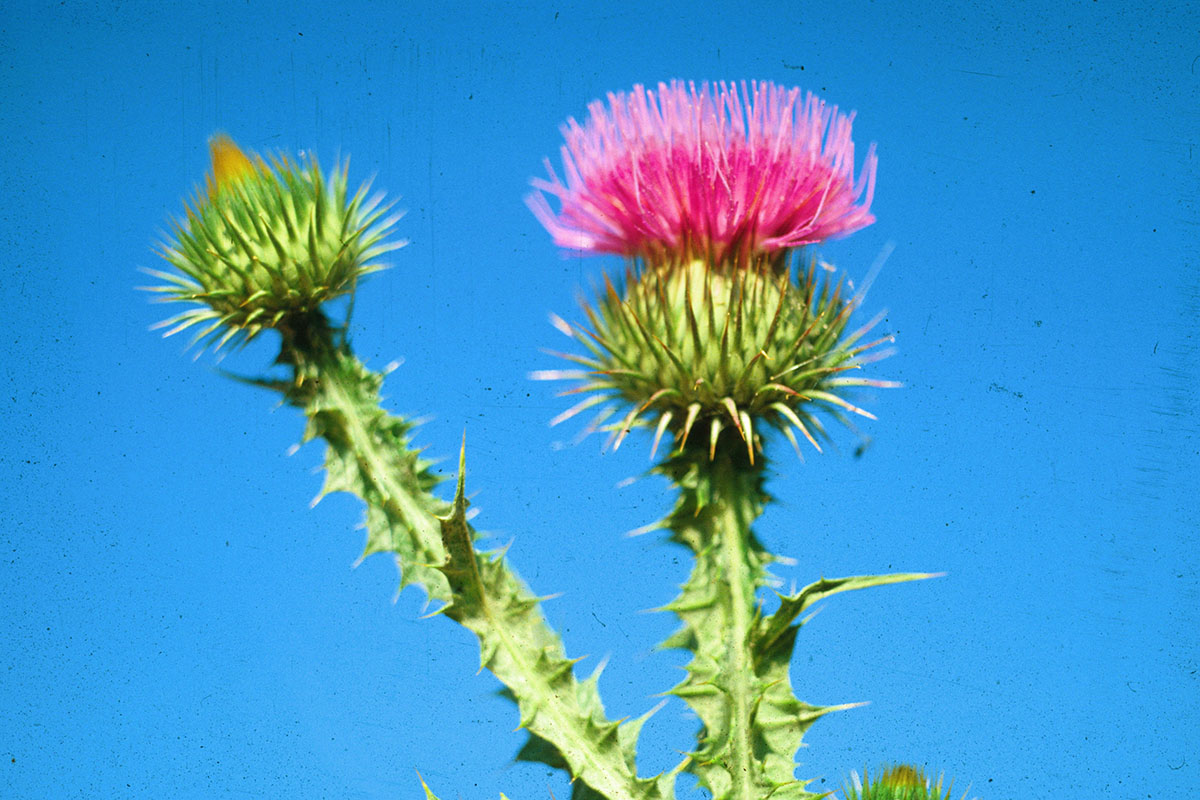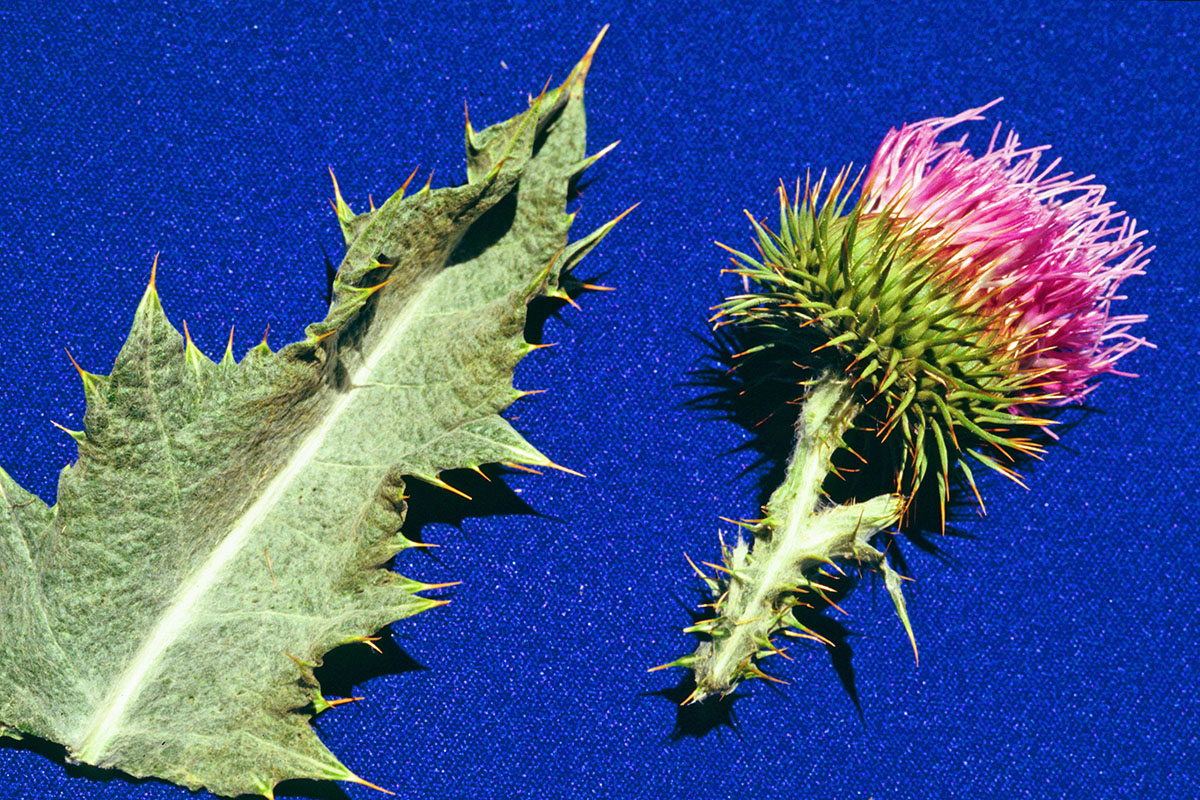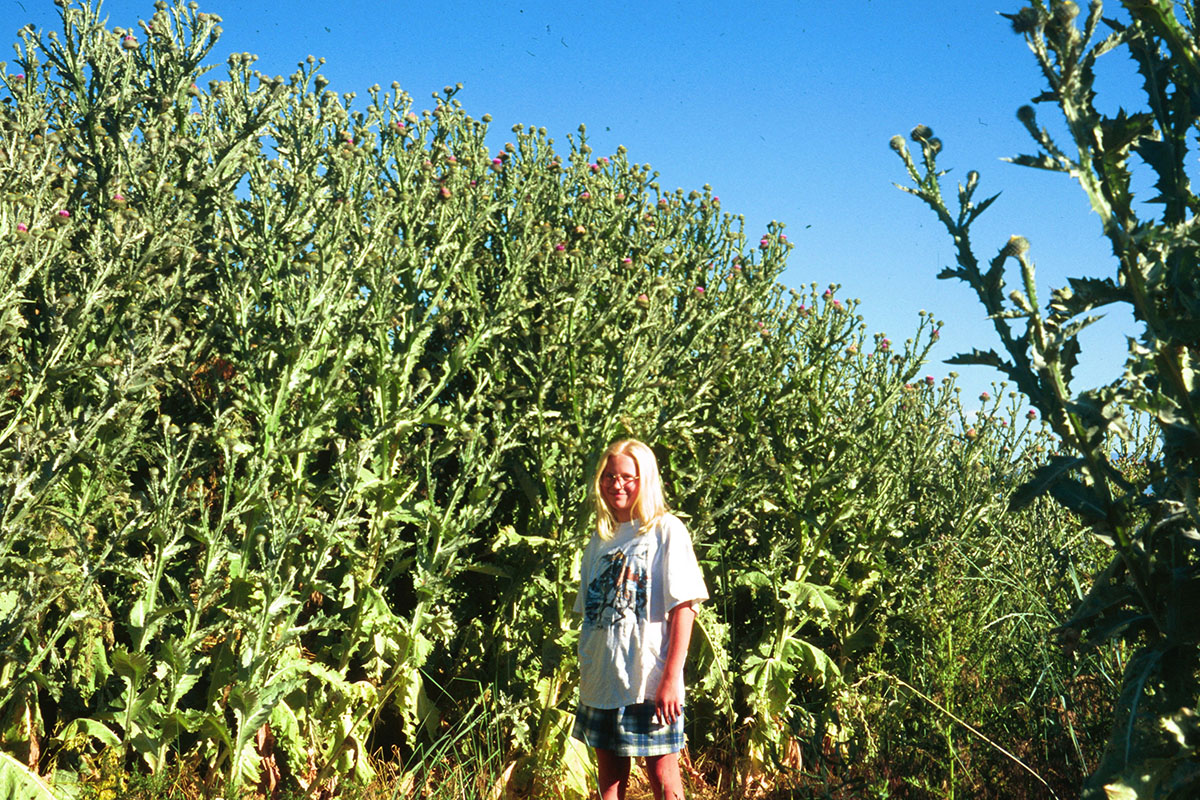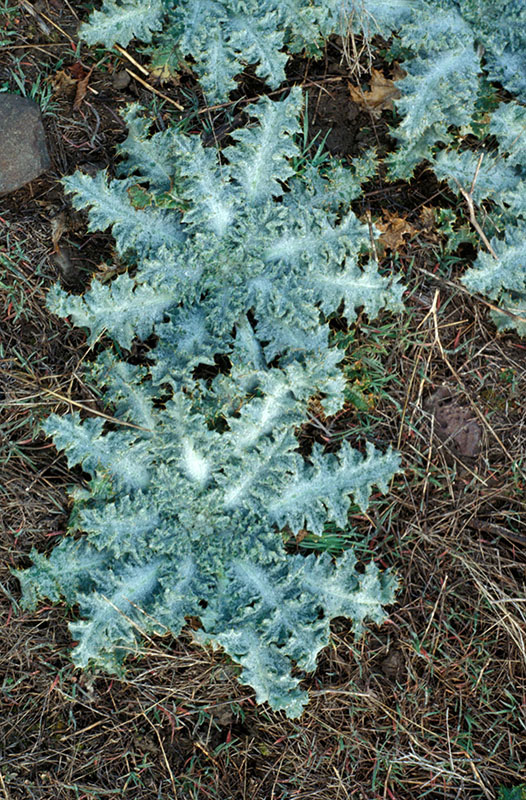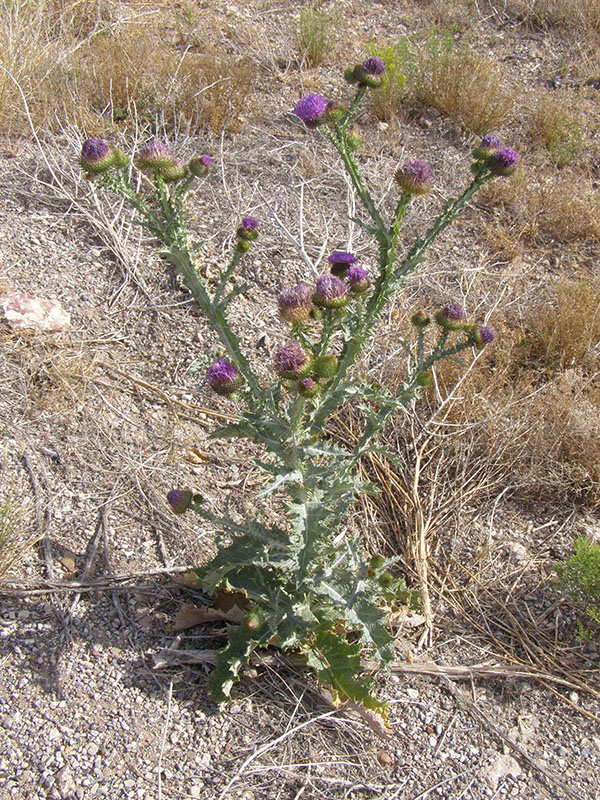Scotch Thistle
Onopordum acanthium
Description
Scotch thistle is a large biennial thistle. Rosettes can grow up to 2 feet in diameter and mature plants are up to 6 feet tall. Scotch thistle have large spiny leaves that are covered in fine hairs. Flower heads are 1-3 inches in diameter and are solitary or in clusters of up to 7. Flowers are purple or white and disc shaped.
Habitat
Disturbed areas, roadsides, trails, rangelands, pastures, forest clearing and cropland.
Location in Nebraska
This is a county listed noxious weed in Banner, Cheyenne, Dawes, Kimball, Morrill, Scotts Bluff, Sheridan and Sioux counties in Nebraska.
Pathway of Introduction and Spread
It reproduces through seen and seeds remain viable for up to 39 years (source). Sharp spines on leaves and stems keep livestock and wildlife from controlling the species.
Impacts
Form dense stands over large areas displacing native vegetation.
Management
Small infestations can be removed by manual methods. Sheep, goats and horses can be used to significantly affect thistles in early stages of infestations. Promoting competitive vegetation to grow can slow the spread and establishment of the thistle. Herbicides are available for control. Learn more here.
Steve Dewey, Utah State University, Bugwood.org
John M. Randall, The Nature Conservancy, Bugwood.org
Bonnie Million, Bureau of Land Management, Bugwood.org
